
A look back at .25-06 Remington, a one-time Goldilocks medium-bore cartridge that could do just about anything.
There was a time when .25-06 Remington was considered one of the best Goldilocks medium-bores. Boasting light recoil, a flat trajectory and enough horsepower to do anything short of hunting grizzly bears, it’s a very versatile cartridge.
Despite this, it's fallen into obscurity and is not likely to re-emerge. Like so many formerly popular cartridges, it has been surpassed by newer ones for several reasons.
However, should you find yourself looking at a vintage rifle chambered for .25-06, here's what you need to know about it.

The .25-06: Mild-Mannered Wildcat
The .25-06 Remington started as a wildcat cartridge created in 1912 by Charles Newton, devised by necking down .30-06 to .257 caliber. While the bullet diameter is 6.5mm in metric measurement, it's not this caliber in the modern sense. The 6.5 family—Creedmoor, Swede, etc.—utilize a .264 caliber or 6.7mm bullet. The 6.5mm measurement in these cases refers to the bore's lands measurement. Anyhow, while the .25 caliber is not a true member of the 6.5 family as we understand it today, it's close enough to refer to it as such, tongue-in-cheek, and use its modern cousins as comparison points.
It was initially marketed as .256 Newton by the Western Cartridge Company, later absorbed by Winchester. Enthusiasts loved it, but the dearth of slow-burning powders led to supply issues and, as a result, it never quite caught on and was out of production by 1938.
It wasn’t until 1969 that Remington would make an honest woman out of it, as it was languishing as an obscure wildcat cartridge in the interim. However, the few shooters who were aware of Newton’s design during this period absolutely fell in love with it.
The .25-caliber family has always been known for being high ballistic coefficient, flat-trajectory projectiles, as it's something of an aerodynamic sweet spot. The .25-06 has traditionally been held to be very accurate, with groups of 1 MOA or better being relatively easy to achieve with factory rifles of the mid-20th century.
Combined with the mild recoil, it was a bullet that needed minimum holdover/holdunder at moderate ranges, printed smaller groups than similar cartridges and punched above its weight at long range thanks to its better energy and velocity retention compared to .30-caliber bullets.
As a result, the .25-06 Remington has classically been regarded as one of the best North American hunting cartridges for game smaller than a grizzly bear or bison. Eventually, that enticed Remington to standardize the cartridge in 1969 and offer it in the Model 700 bolt-action rifle.
.25-06 Ballistics
The ballistics of .25-06 Remington look quite impressive on paper, but that isn't necessarily the whole story.
Common factory loadings for .25-06 include 75- to 120-grain bullets, with 100-, 115-, 117- and 120-grain loads being the most popular. The 115- and 117-grain soft point loads are generally favored for hunting.
Here's a 1,500-yard Shooter’s Calculator ballistic trajectory table for Hornady’s 117-grain InterLock BTSP American Whitetail .25-06 load (advertised G1 BC of 0.391). All tables were calculated presuming a 1.5-inch sight height, a 10 mph 90-degree crosswind, zero corrections for atmosphere and a 100-yard zero unless otherwise specified.

This rather pedestrian loading stays supersonic to 1,000 yards. While not a long-range powerhouse, it still has greater velocity and energy at 700 yards than a .357 Magnum at the muzzle.
Modern, higher-BC projectiles and modern powders do improve it somewhat. Here's the same trajectory table for HSM's Trophy Gold 115-grain load, using a Berger VLD Hunting bullet (G1 BC of 0.483).
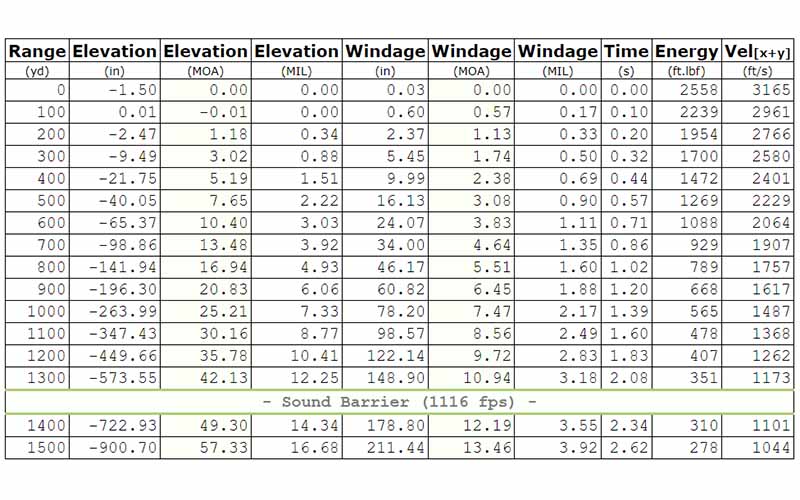
That's impressive for a cartridge that produces less than 13 foot-pounds of recoil.
However, there's a little more to the story. In the good old days, people zeroed their rifles for Maximum Point Blank Range (MPBR), extending the maximum distance at which the shooter didn't need to hold over or under.
If you've never heard of it, how it works is setting your zero so the point of impact is within a set distance from the point of aim, typically 2 to 4 inches, out to a known distance.
Ergo, you just put the reticle on any target inside that distance and hit it. Calibrate a rifle for +/- 3 inches to 300 yards, and you'll hit within 3 inches to that distance without having to think about it, and that's where .25-06 has always excelled.
Here's the trajectory table for the HSM load recalculated for its MPBR, assuming +/- 3 inches.
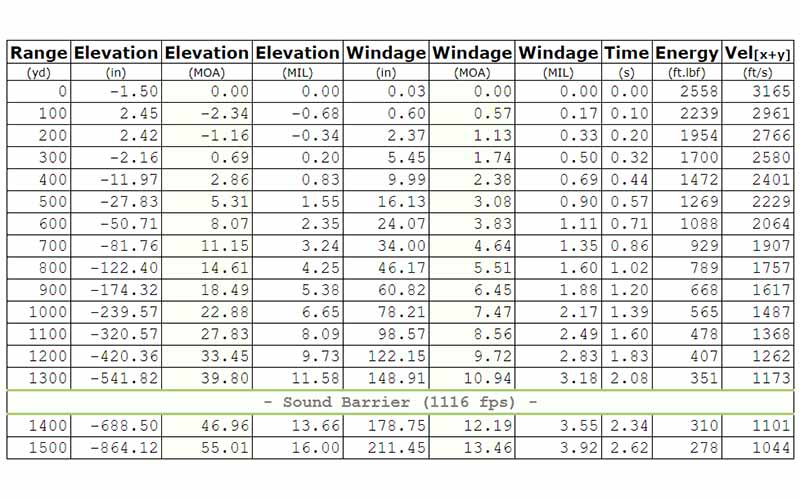
Put the reticle on anything in 300 yards and pull the trigger, and POI is within 3 inches of POA. At 400 yards, you only need to hold over by 12 inches. If you're hunting deer, that means you only have to put the reticle a few inches over its back.
As you can imagine, that does wonders for hit probability.
.25-06 Remington Versus .270 Winchester
The .25-06 Remington had stiff competition from the .270 Winchester, a cartridge that enjoyed factory support far earlier resulting in increased popularity. Though it has slightly more kick (up to 17 foot-pounds), .270 is still arguably the Western hunting cartridge by which others are judged.
Comparison is a little tricky, however, as the .270 Winchester uses a larger diameter (technically 6.8mm) and heavier projectiles. Velocity and energy are broadly comparable, but .270 has a slight edge in velocity.
This is a trajectory table for 140-grain Hornady American Whitetail JSP (G1 BC of 0.486), using a 100-yard zero.
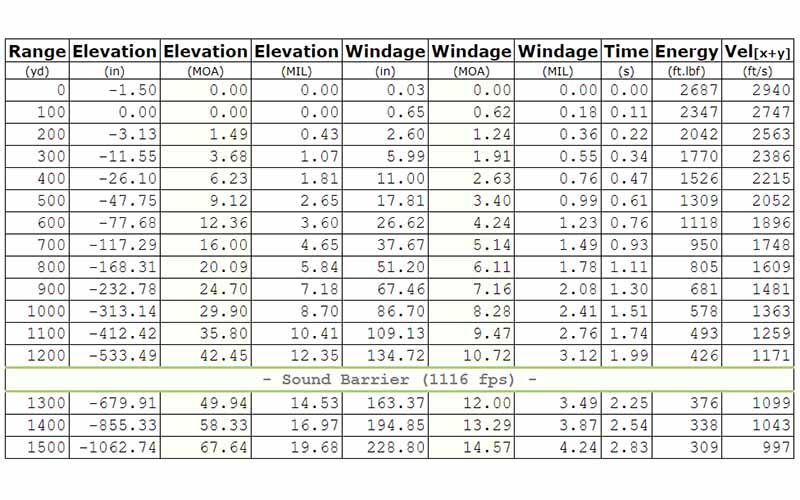
As you can see, it has a slightly longer supersonic range, but only about a 50-yard advantage in terms of energy, and there's barely any advantage in wind deflection or elevation either.
However, a modern high-BC .270 Winchester load can pull away fairly dramatically. Here's a trajectory table for the Winchester 150-grain AccuBond Long Range load, with a G1 BC of 0.591.
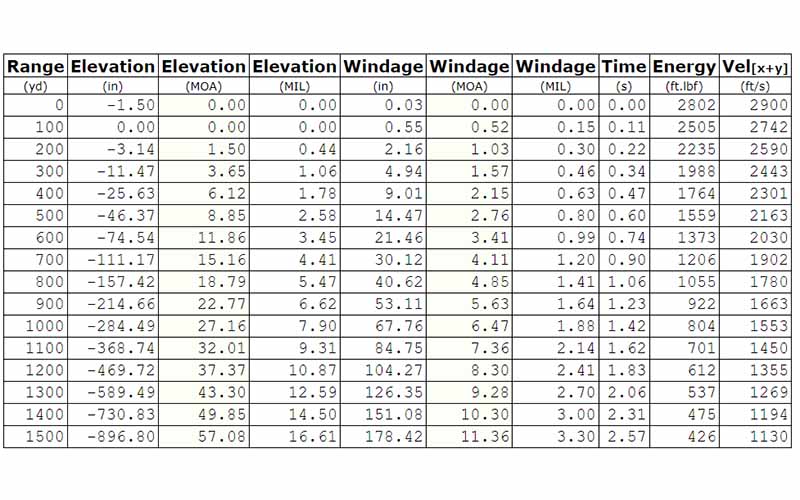
Supersonic range is just over 1,500 yards, and the bullet retains 1,000 foot-pounds of energy to about 850 yards.
What Is A .25-06 Rifle Best Used For?
As you can tell from the ballistics tables, .25-06 Remington is a fantastic mid-range medium-game cartridge. It’s been used to down nearly every type of North American game (and even some African game), and it makes it easy for the shooter to place shots out to 400 yards with minimal effort and recoil, a nearly perfect Western game bullet.
However, there are real deficiencies compared to some other calibers.
It's a long-action cartridge, and seating long, high-BC bullets is problematic as it extends the cartridge's overall length (COL) beyond what most bolt-action magazines are compatible with. Semi-autos are a non-starter.
The 6.5mm Creedmoor and .260 Remington don't have those problems, yet they can do everything .25-06 Remington is capable of and then some.

.25-06 Rifles And .25-06 Ammunition
To give you an idea of what’s out there, at the time of this writing, GrabAGun lists 39 rifles chambered in .25-06 Remington from 6 manufacturers. Of those, 16 are made by Savage, of which 10 are the Axis rifle. Of the 39 in total, only 11 are actually in stock.
MidwayUSA lists 23 different .25-06 loads, of which 4 are in stock. The least expensive is Hornady American Whitetail, at $30 per box of 20. Granted, that's not awful by any stretch.
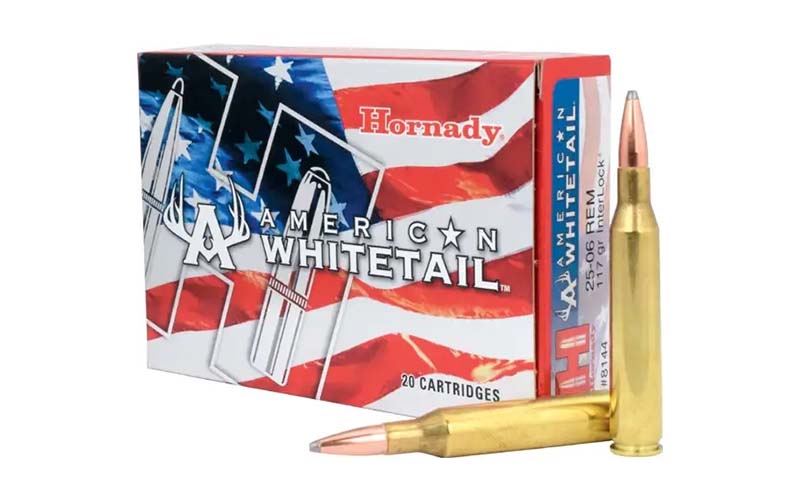
Remington itself only makes two loads, a 100-grain and 120-grain, and only in their CoreLokt series. In other words, they aren't wasting the most modern bullets on it.
In short, there is some support for .25-06, but it's not much. The guns and ammunition are out there, but pickings are slim.
Should You Even Bother With .25-06 Remington Anymore?
There's a certain romance to old hunting cartridges and old hunting rifles, but it takes time and money to indulge it. If you already have or find a vintage rifle that you love in .25-06, there’s nothing wrong with buying it, shooting it, hunting with it and enjoying it. As the above ballistic analyses show, it is still very capable and has a lot to offer.
But, if you're starting at square one and looking to get a rifle for a practical application? At this point, other more widely available cartridges do the same things, do them better and are more versatile.
The 6.5mm Creedmoor has roughly the same recoil (about 12 to 13 foot-pounds) while being ballistically superior to .25-06. Not only that, but 6.5mm Creedmoor is available in semi-autos and bolt-actions alike, enjoys ridiculous commercial support and is cheaper.
The .243 Winchester and 7mm-08 would be more practical choices as well, and arguably .260 Remington, .270 Winchester and 6mm Creedmoor too.
These days, a lot of classic cartridges are unfortunately fading into obscurity. The .25-06 is slowly limping into its sunset and those who have a particular fondness for the cartridge should enjoy it while they can. For everyone else, you’re better off looking at something more modern.
Raise Your Ammo IQ:
- Beyond The 6.5 Creedmoor: The Other 6.5 Cartridges
- The Lonesome Story Of The Long-Lost 8mm
- Ammo Brief: .375 H&H Magnum
- .350 Legend Vs .450 Bushmaster: Does One Win Out For Hunting?

Next Step: Get your FREE Printable Target Pack
Enhance your shooting precision with our 62 MOA Targets, perfect for rifles and handguns. Crafted in collaboration with Storm Tactical for accuracy and versatility.
Subscribe to the Gun Digest email newsletter and get your downloadable target pack sent straight to your inbox. Stay updated with the latest firearms info in the industry.

![Best Concealed Carry Guns In 2025 [Field Tested] Wilson Combat EDC X9S 1](https://gundigest.com/wp-content/uploads/Wilson-Combat-EDC-X9S-1-324x160.jpg)


![Best 9mm Carbine: Affordable PCCs [Tested] Ruger Carbine Shooting](https://gundigest.com/wp-content/uploads/Ruger-Carbine-Shooting-100x70.jpg)
![Best AR-15: Top Options Available Today [Field Tested] Harrington and Richardson PSA XM177E2 feature](https://gundigest.com/wp-content/uploads/Harrington-and-Richardson-PSA-XM177E2-feature-100x70.jpg)

Ask Ron Spomer if 6.5 Creed and .260 Rem. are superior to .25-06. NO!
“Very interesting” as Siegfried would say! With the Army’s adoption of the .277Fury, it’s hard to understand why they didn’t examine the .270 Winchester or the 25-06. It would appear that both the 25-06 & the 270 with a little case tweaking, & a more suitable high BC bullet could easily perform to the Army’s new specs without the super-high 80,000+ psi & expensive dual steel/brass case.
Thoughts?
Somebody in the military small arms department is outsmarting themselves! $$$ under the table, perhaps? 7mm-08 makes perfect sense.
The 25-06 in a Remington 700 Classic is one of my favorite cartridges/rifles. You are correct in its outstanding accuracy potential. I hand load a 120 gr Sierra HP to just over 3000 fps. Devastating on mule deer and pronghorns to 300+ yards. It will deliver everything you ask for all but the biggest NA game.
Very nice article, but 6.5mm is .264, not .257.